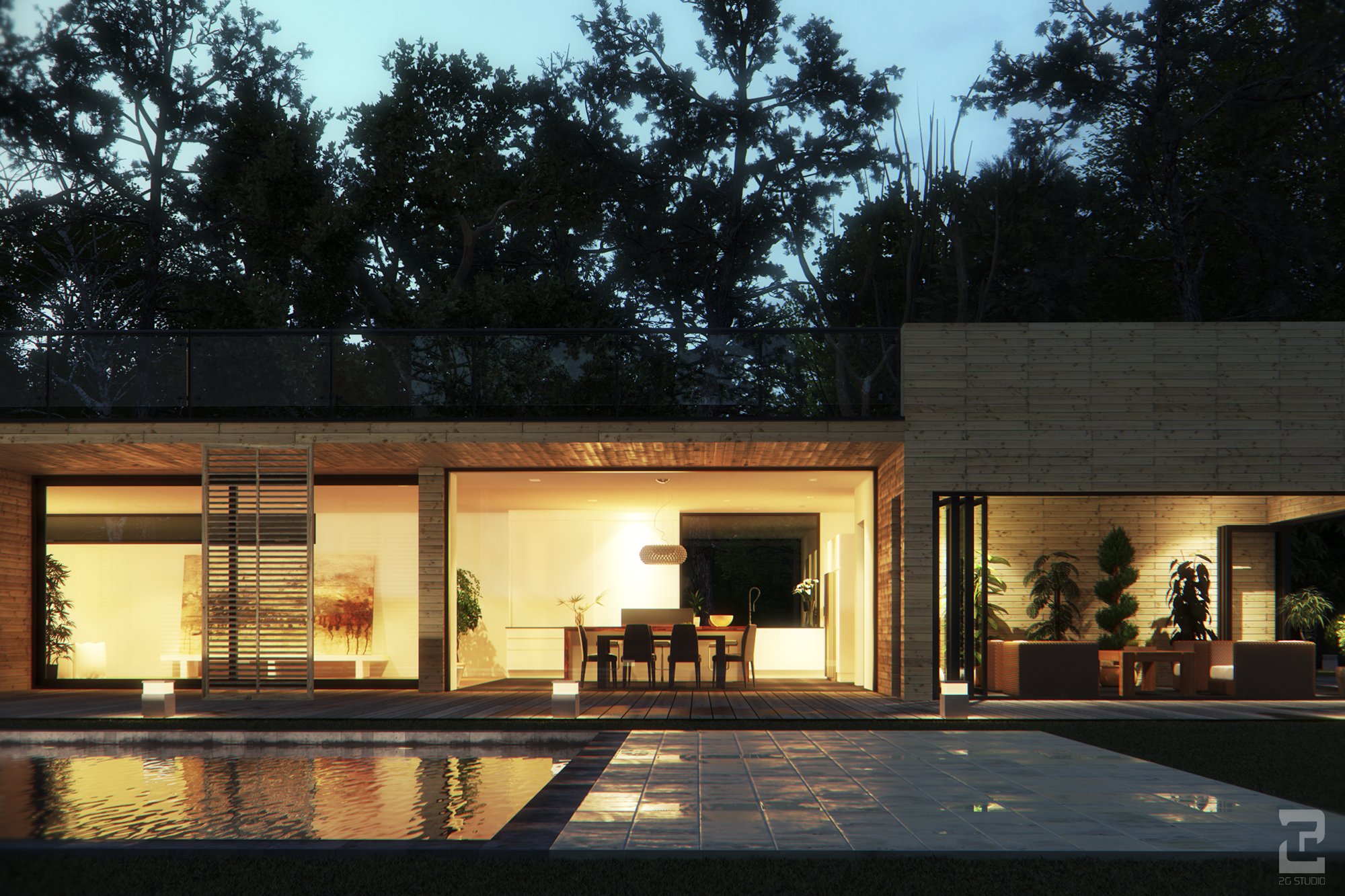Recommended PC Specs for 3D Rendering: A Comprehensive Guide
Hey there, fellow 3D artists and enthusiasts! If you're diving into the captivating world of architectural visualization or 3D rendering, you're probably well aware that the right PC specs can make all the difference. As someone who has spent countless hours crafting 3D architectural renderings, I know the pains of slow render times and the joy of a smooth, efficient workstation. In this article, we'll embark on a journey to demystify the world of PC specifications for 3D rendering. By the time you're done reading, you'll be equipped with the knowledge to make the right PC choice for your rendering needs.
Understanding the Basics of 3D Rendering
What's 3D Rendering Anyway?
Before we dive into PC specs, let's make sure we're on the same page about what 3D rendering entails. Essentially, 3D rendering is the process of transforming 3D models into 2D images or animations. In the world of architectural visualization, this means turning your meticulously designed building plans into realistic visualizations that clients can understand and appreciate.
The Hardware Demands
3D rendering is a computationally intensive task that pushes your PC's components to their limits. A powerful PC is essential for handling the complex calculations and simulations needed to create stunning architectural visualizations. Now, let's explore the key components that make up a rendering powerhouse.
CPU (Central Processing Unit)
Your CPU, often referred to as the brain of your PC, plays a crucial role in 3D rendering.
Cores and Clock Speed
In the world of 3D rendering, more cores usually translate to better performance. Rendering software like Blender, 3ds Max, and V-Ray love to chew through cores, so investing in a CPU with a high core count is often worth the expense. Additionally, a high clock speed will ensure your CPU handles single-threaded tasks efficiently.
Personal Anecdote: I remember the days of using a quad-core CPU and watching my renders take ages to complete. Upgrading to an octa-core CPU with a higher clock speed was a game-changer, drastically reducing my rendering times.
Recommendations for CPUs
Budget-Friendly: AMD Ryzen 7 5800X or Intel Core i7-12700K
High-End: AMD Ryzen 9 5950X or Intel Core i9-12900K
GPU (Graphics Processing Unit)
The GPU is responsible for rendering the visual elements in your scenes, making it an essential component for real-time visualization and final renders.
Gaming vs. Workstation GPUs
While gaming GPUs can handle some rendering tasks, workstation GPUs like NVIDIA Quadro and AMD Radeon Pro are designed for professional 3D work. They're optimized for stability and performance in rendering applications.
Recommendations for GPUs
Gaming/Prosumer: NVIDIA GeForce RTX 3080 or AMD Radeon RX 6900 XT
Workstation: NVIDIA Quadro RTX 6000 or AMD Radeon Pro WX 8200
RAM (Random Access Memory)
RAM acts as a fast, temporary storage for your computer to quickly access data.
Capacity and Speed
When working with large architectural models, you'll want a healthy dose of RAM. Consider 32GB as a minimum for architectural visualization, and if your budget allows, go for 64GB or more. Higher RAM speed will also help in data transfer and real-time previews.
Storage Solutions
The right storage setup can make a substantial difference in rendering speed and overall PC performance.
The Importance of SSDs
Solid-State Drives (SSDs) are a game-changer. They are significantly faster than traditional Hard Disk Drives (HDDs) and make loading large files and scenes a breeze.
Personal Anecdote: When I upgraded from an HDD to an SSD, I couldn't believe the difference. Loading my architectural models and rendering projects became a breeze, and my productivity skyrocketed.
Recommendations for Storage
Primary Drive: 1TB NVMe SSD for your OS and software.
Secondary Drive: 2TB or more SSD for project files and rendering cache.
Cooling and Case Design
Efficient cooling is often overlooked but critical for a rendering PC.
Efficient Cooling
Adequate cooling ensures that your CPU and GPU operate at peak performance without overheating. Look for cases with good airflow and invest in quality cooling solutions.
Power Supply Unit (PSU)
A high-quality PSU is essential for a stable and reliable rendering PC.
PSU Efficiency and Wattage
Choose a power supply with at least an 80 PLUS Bronze certification to ensure efficiency. Calculate your power needs based on your PC's components and ensure the PSU can handle it.
Consideration for Overclocking
The Temptation of Overclocking
Overclocking can provide a significant performance boost, but it comes with risks. It's like fine-tuning a sports car; it can be exhilarating, but you must be careful not to push too far.
Personal Anecdote: I once pushed my CPU too hard while experimenting with overclocking and, unfortunately, fried it. So, if you're planning to overclock, do your research and proceed with caution.
Operating System and Software
Operating Systems
Windows is the most common choice for 3D rendering, but Linux can be a great alternative if you're tech-savvy. Your choice should align with your software and workflow.
Software Compatibility
Ensure your software, plugins, and drivers are compatible with your chosen operating system.
Essential Software Tools
3D Modeling and Rendering: Blender, 3ds Max, Cinema 4D
Realistic Rendering: V-Ray, Corona Renderer, Octane Render
Post-Processing: Adobe Photoshop, Affinity Photo
Building or Buying?
Building Your Own PC
Building your PC can be a rewarding experience and allows you to customize every component. However, it requires technical expertise.
Buying a Pre-Built Workstation
Pre-built workstations are convenient and come with warranties, but you may have less control over the components. Research trusted brands like Dell, HP, or Lenovo for reliable workstations.
Budget Considerations
Setting Your Budget
Your budget should be a key consideration in choosing your PC specs. Determine how much you can allocate to your rendering workstation.
Budget Options
Low Budget: Start with a mid-tier CPU and GPU, upgrading as you go.
Mid-Range Budget: Invest in a powerful CPU and GPU combo with ample RAM.
High-End Budget: Go all-out with top-of-the-line components for maximum performance.
Maintenance and Upgrades
Regular Maintenance
Keep your PC clean, well-ventilated, and free from dust to ensure consistent performance.
Upgrades
As technology evolves, consider upgrading your GPU, RAM, or storage to keep your PC at the cutting edge.
Conclusion
In the world of 3D rendering, your PC is your ultimate tool. Whether you're a seasoned pro or just starting your journey in architectural visualization, investing in the right PC specs is essential for unleashing your creativity and productivity. I hope this guide has shed light on the often complex world of PC specifications, helping you make informed decisions and ultimately elevating your rendering game. So, go ahead, build your dream rendering machine, and let your architectural visions come to life on screen.









